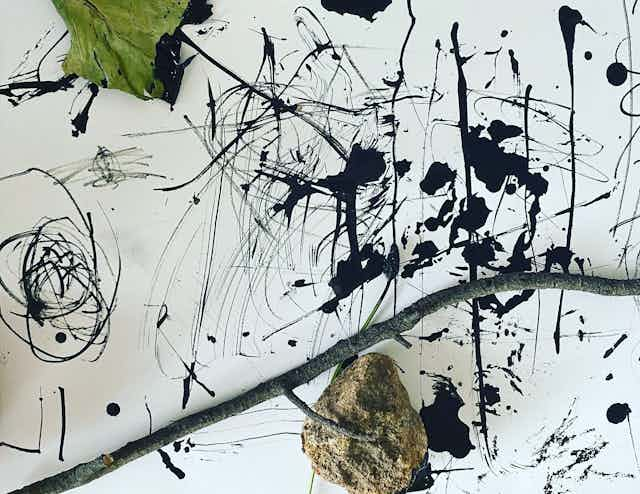As a visual artist and educator, I know how important it is to encourage your child to think and behave like an artist. But this is not necessarily about drawing or painting in a particular way.
The habits of an artist include the ability to generate ideas, trust in creative processes, be comfortable with ambiguity, take risks and embrace failure.
All this helps children embrace “failures” as a learning experience. In doing so, you are building their resilience.
These are all transferable skills kids can use in other areas of learning and life. As the late UK education expert Ken Robinson said:
If you are not prepared to be wrong you will never come up with anything original.
How to think and behave like an artist
You can encourage children to develop the habits of an artist by providing opportunities for them to take creative risks and use problem finding skills. Problem finding skills are identifying unforeseen problems using critical and analytic thinking.
Here are three art activities to try in the holidays – or any time – to build these skills.
These activities work for kids from five and up. Some children will need help but parents should try to be the “guide on the side”. This means helping children make their own discoveries and not jumping in and taking over.
Read more: Holiday help! An art expert suggests screen-free things to do in every room of the house
1. Blind contour drawing

In blind contour drawing you don’t look at the paper while you draw and once your drawing implement touches the paper, you don’t lift it off until you are done.
You can draw anything, but portraits are a lot of fun. Look closely at your subject and slowly draw what you see, looking for lines and contours to draw in and around them.
This is a gentle way of extending creative potential of drawing. It also stops your inner critic telling you you “can’t draw” (because you can’t see what you’re doing, so you can’t criticise yourself). It also connects your hand to your brain and allows you to draw what you see, not what you think you see.
The lines are always lovely. They are free flowing and fluid as opposed to what I call “furry lines” that show all insecurities, second thoughts and apprehensions.
Read more: How to set up a kids' art studio at home (and learn to love the mess)
2. Make your own brushes

In a previous article, I talked about how to make paint.
Another similar activity is making brushes or “mark-making tools” as I like to call them. You can use a range of materials from outside or even the recycling bin: a few sticks, masking tape and some string. Tie a bunch of twigs and leaves or feathers together and bind them to the top of a stick.
Why use not the bottom of the stick to make a double-ended tool? Or cut up an old sponge and tie it to a stick.
Try really long sticks or short stubby sticks. The size and shape of the stick will change the way you use it and affect the marks you will make.
Dip your tools in ink and try them out on reams of butcher’s paper rolled out in a space where children feel free to move around and put their body into it. You can use paint too, though you might want to add water to make it runnier.
This encourages becoming comfortable with uncertainty (who knows what marks these new tools will make?).
In this context “failure” might look like the tool not making the mark the child had in their mind. This forces the child to either go with the mark it makes or go back and redesign their tool.
This helps children to become comfortable with that idea of testing, experimenting and creating your way through an issue.
3. Change your medium and your size
Willow charcoal – made from burnt willow branches – is an excellent medium for experimenting with and enables children to “draw big”.
It can be crumbly and smudges easily (it’s also extremely messy) so it can make some unexpected marks and children can explore a range of tones from black to light grey.

Children can use the tip of it to draw lines, or use the side of the stick to create wide shapes and shades.
Get some large pieces of paper and encourage your child to draw as big as they can to create huge gestural drawings with the charcoal. This encourages kids to move out of their comfort zone (and beyond A4 paper).
Challenge them to upscale what they see, such as flowers or their favourite object. Or put on some music and suggest to your child they draw what they hear and feel.
If you don’t have charcoal, you could also use jumbo chalk and draw on the footpath.

Another approach is to sit on a piece of paper and get them to trace their bodies, move, trace themselves and again, like Australian artist Julie Rrap.
If the page gets covered in charcoal just keep going, cover the paper completely with charcoal and then use a eraser to draw “in reverse”.
As I have said before, try not to worry about the mess. This is also part of being an artist – and learning to think like one, too.
Read more: Stand back and avoid saying 'be careful!': how to help your child take risks at the park

